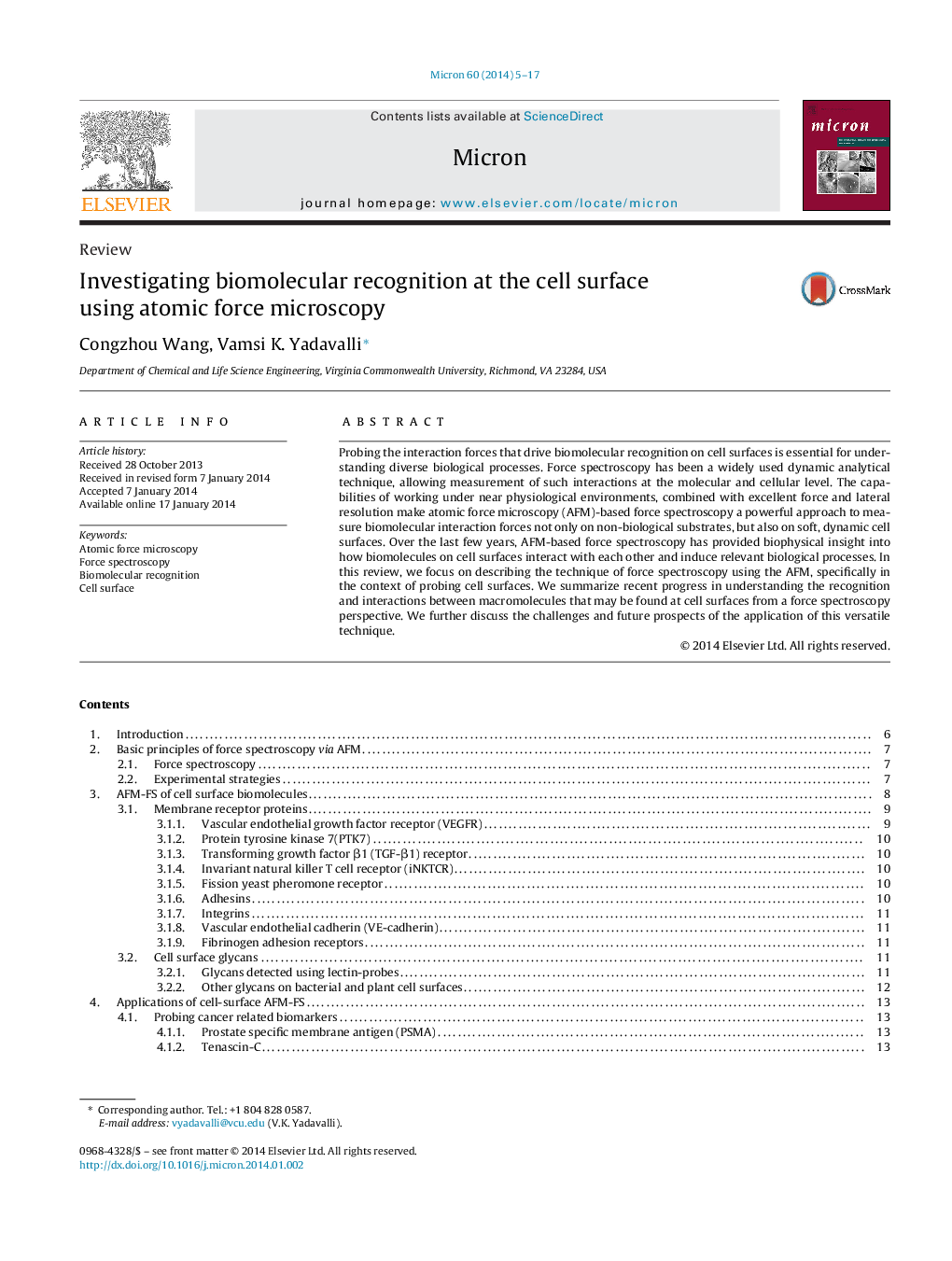| Article ID | Journal | Published Year | Pages | File Type |
|---|---|---|---|---|
| 1588952 | Micron | 2014 | 13 Pages |
Probing the interaction forces that drive biomolecular recognition on cell surfaces is essential for understanding diverse biological processes. Force spectroscopy has been a widely used dynamic analytical technique, allowing measurement of such interactions at the molecular and cellular level. The capabilities of working under near physiological environments, combined with excellent force and lateral resolution make atomic force microscopy (AFM)-based force spectroscopy a powerful approach to measure biomolecular interaction forces not only on non-biological substrates, but also on soft, dynamic cell surfaces. Over the last few years, AFM-based force spectroscopy has provided biophysical insight into how biomolecules on cell surfaces interact with each other and induce relevant biological processes. In this review, we focus on describing the technique of force spectroscopy using the AFM, specifically in the context of probing cell surfaces. We summarize recent progress in understanding the recognition and interactions between macromolecules that may be found at cell surfaces from a force spectroscopy perspective. We further discuss the challenges and future prospects of the application of this versatile technique.
